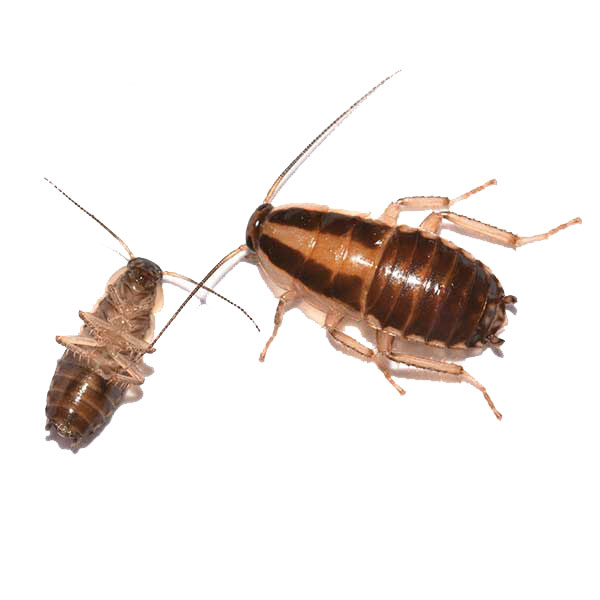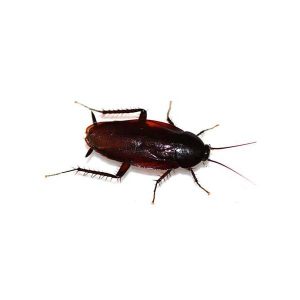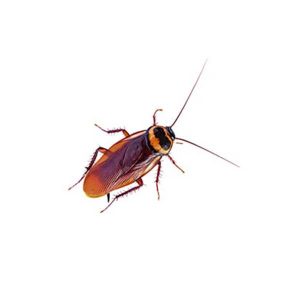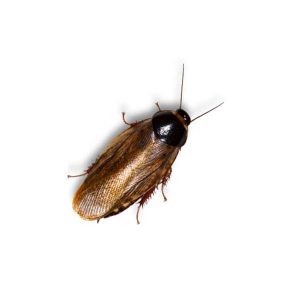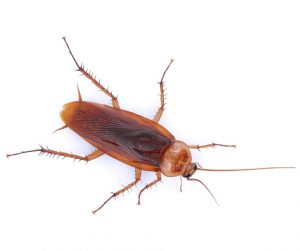German Cockroaches in Georgia
The German cockroach (Blattella germanica) is distributed worldwide and is the most prevalent species in and around homes, apartments, supermarkets, food processing plants, and restaurants. Ships, especially cruise ships and naval vessels can also be heavily infested. These roaches prefer warm humid environments and infestations are frequently found in residential and commercial kitchen environments, and bathrooms. When infestations are large, they can spread to other parts of a building. This species reproduces the fastest of the common pest cockroaches—a single female and her offspring can produce over 30,000 offspring in a year.
German Cockroach Facts and Identification
What Do German Cockroaches Look Like?
So how can you distinguish between German cockroaches and other types of cockroaches in Georgia? German roaches are small, measuring about ½ to ⅝ inch long, with a light brown to tan body. They are easily identifiable by two parallel dark stripes running lengthwise down their backs, just behind the head. They have six spiny legs and long, thin antennae. Though they possess wings, they rarely fly and prefer to move quickly across surfaces, and their compact, flat bodies allow them to squeeze into tiny cracks and crevices.
Signs of a German Cockroach Infestation
Signs of a German cockroach infestation include finding small, dark droppings resembling pepper or coffee grounds in areas like kitchen drawers, cabinets, or along baseboards. A distinctive musty odor caused by their secretions is another common indicator.
You might also spot shed skins, as these cockroaches shed their exoskeletons multiple times during their life cycle. Egg cases, known as oothecae, are small, brown capsules often found hidden in crevices. Seeing live cockroaches, particularly during the day, suggests a severe infestation, as German cockroaches are nocturnal and typically hide during daylight hours.
Habitat, Diet, Life Cycle & Behaviors
Where Do German Cockroaches Live?
German roaches in Georgia are found primarily in kitchens, bathrooms, or other areas where daily access to water is available. If sanitation is poor, the German cockroach can successfully expand its normal habitat to include all portions of a structure where adequate food, water, and shelter exist. German cockroaches prefer to hide in wooden and paper materials, as well as electrical equipment. These roaches can also be found hiding in cabinets, drawers, under sinks, and inside heat-producing appliances like dishwashers, microwaves, and coffee makers. And it’s not unusual for us to be asked how to get rid of cockroaches from air vents.
Diet
German cockroaches are omnivores, eating almost anything available. They are particularly attracted to starchy, sugary, and greasy foods, making kitchens and pantries prime targets. However, they can also survive on non-food items like soap, toothpaste, glue, and even book bindings. In severe infestations, German cockroaches may resort to eating hair, dead skin, and other organic matter. Their ability to consume a wide range of materials makes them highly adaptable and difficult to eliminate.
Life Cycle
The German cockroach life cycle is rapid and includes three stages:
- Egg: The female German cockroach produces oothecae, or egg cases, containing up to 40 eggs each. These cases are typically deposited in hidden, warm areas and hatch in about 28 days.
- Nymph: Nymphs are small, wingless, and resemble adults. They molt multiple times over a period of 6-8 weeks, growing larger with each molt.
- Adult: After maturing, adult German cockroaches are small, light brown, and have two dark stripes on their backs. They can live up to 100 days and reproduce quickly, with females capable of producing several egg cases throughout their lifespan.
Given their rapid reproduction and adaptability to various food sources, German cockroaches can quickly escalate from a few individuals to a severe infestation.
Upload a Pest Photo
Get instant pest identification.
Behaviors
German cockroaches are nocturnal and prefer to stay hidden in dark, warm areas during the day, becoming active at night. They are highly adaptable and can thrive in various environments, often found in kitchens and bathrooms. These pests tend to gather in large numbers and scatter quickly when disturbed, making them difficult to control. Their behavior includes rapid reproduction; a single female can produce multiple egg cases in her lifetime.
Are German Cockroaches Dangerous?
German cockroaches are more than just a nuisance—they pose significant health risks. These pests are known carriers of various diseases and allergens, making them dangerous in both residential and commercial spaces. German cockroaches can spread bacteria such as Salmonella and E. coli, leading to food poisoning, diarrhea, and other gastrointestinal issues. Their droppings, shed skins, and saliva contain allergens that can trigger asthma and allergic reactions, particularly in children and the elderly. Additionally, they can contaminate food and surfaces with pathogens they pick up while scavenging in unsanitary areas, further increasing the risk of illness.
Given their rapid reproduction and ability to thrive in small, hidden spaces, controlling a German cockroach infestation is crucial for maintaining a healthy living environment. Professional pest control services are often necessary to eliminate these pests and protect your health.
How To Get Rid of German Cockroaches
To effectively get rid of German cockroaches, a targeted treatment approach is essential. Bait stations and gel baits are particularly effective for these pests. These products allow cockroaches to consume the poison and bring it back to their nests, gradually eliminating the entire colony. Insect growth regulators (IGRs) can also be employed to disrupt their reproductive cycle, preventing future generations. For a comprehensive solution, professional services like those offered by Active Pest Control are advisable. Our expert technicians use advanced methods to ensure the thorough extermination of German cockroaches. Additionally, we provide ongoing monitoring and advice on prevention to keep these resilient pests from returning.
When to call an exterminator for cockroaches? It’s important to start treatment for cockroaches as soon as you see them. German cockroaches reproduce rapidly and need only a few weeks to turn into a swarm, making infestations difficult to control without professional help.
German Cockroach Prevention Tips
Preventing a German cockroach infestation is far better than having to call out the pest control company. Start by sealing potential entry points like cracks and crevices around doors, windows, and plumbing to block their entry. A clean kitchen is also essential. Keep your kitchen spotless—wipe up spills immediately, store food in airtight containers, and take out the trash daily, as German cockroaches are particularly attracted to food residues. Another way to reduce potential harborage places is to fix any leaks and use dehumidifiers to reduce moisture, as they thrive in warm, humid environments. Finally, decluttering is essential; German cockroaches love hiding in small, dark spaces.
Our team of cockroach pest control experts understands how distressing a cockroach infestation can be, which is why we work with you to prevent them in the first place. We are proud to provide our Georgia community with quick, effective, and long-lasting cockroach control services year-round.
Need help with pest control?
Fill out the form below and we’ll be in touch!
*During normal business hours. After hours inquiries will be returned the next business day.
German Cockroach FAQs
Do German Cockroaches Fly?
German cockroaches do have wings, but they rarely fly. They prefer to scuttle quickly across surfaces and typically stay close to their hiding spots.
Do German Cockroaches Bite?
German cockroaches rarely bite humans. Bites are uncommon and usually occur when food is scarce and the cockroach is desperate. While cockroach bites can cause minor irritation or allergic reactions, they are generally not considered a serious health threat.
What Attracts German Cockroaches?
German cockroaches are attracted to warm, humid environments and readily available food sources. They are particularly drawn to starchy, sugary, and greasy foods, but can also consume non-food items like glue and soap.
What Do German Cockroach Eggs Look Like?
German cockroach eggs are encased in oothecae, small, brown, capsule-like structures about ⅓ inch long. Each ootheca can contain up to 40 eggs. These eggs are often hidden in dark, warm places.

